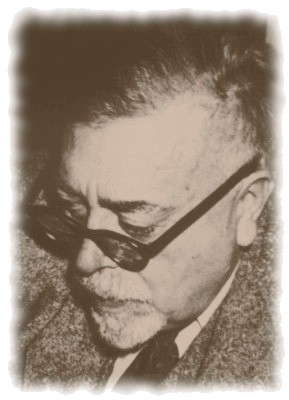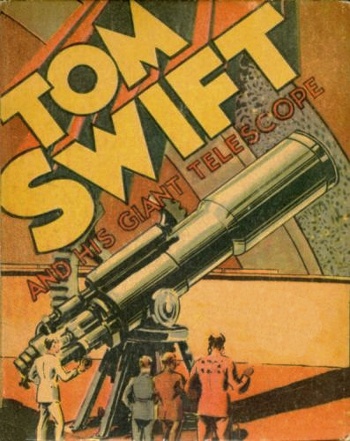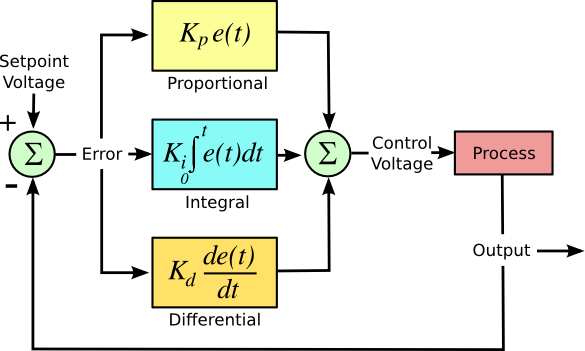Norbert Wiener
May 12, 2014
Norbert Wiener (November 26, 1894 - March 18, 1964) was a prominent
American mathematician, a
professor of
mathematics at
MIT, and also a
philosopher. Wiener was a
child prodigy, so it was not unexpected that he became the sort of
absent-minded professor we see stereotyped in the
cinema.

Norbert Wiener (November 26, 1894 - March 18, 1964)
Wiener was the founder of the interdisciplinary field of cybernetics.
(Photo by Konrad Jacobs, modified for artistic effect, via Wikimedia Commons.)
There are quite a few Wiener
anecdotes, but my favorite of these was the one recalled by fellow mathematician,
Howard Eves. Fellow
IEEE member,
Shubhendu Trivedi, published
a nice version of this anecdote on
his blog, and he's given me permission to reprint it, as follows:[1]
"Norbert Wiener was renowned for his absent-mindedness. When he and his family moved from Cambridge to Newton, his wife, knowing that he would be of absolutely no help, packed him off to MIT while she directed the move. Since she was certain that he would forget that they had moved and where they had moved to, she wrote down the new address on a piece of paper, and gave it to him. Naturally, in the course of the day, some insight occurred to him. He reached in his pocket, found a piece of paper on which he furiously scribbled some notes, thought it over, decided there was a fallacy in his idea, and threw the piece of paper away in disgust."
"At the end of the day he went home – to the old address in Cambridge, of course. When he got there, he realized that they had moved, that he had no idea where they had moved to, and that the piece of paper with the address was long gone. Fortunately inspiration struck. There was a young girl on the street and he conceived the idea of asking her where he had moved to, saying, “Excuse me, perhaps you know me. I'm Norbert Wiener and we've just moved. Would you know where we've moved to?” To which the young girl replied, 'Yes Daddy, Mommy thought you would forget.'"
Pure mathematicians are remembered only among their math
colleagues, but
applied mathematicians are also known to many
scientists and
engineers. Historically, we rely on the applied math of such luminaries such as
Leonhard Euler (1707 - 1783), who gave us
Euler–Bernoulli beam theory, and the
Euler equations of
inviscid flow. Of course, Euler is just one example of many.
Norbert Wiener's work was applied to
electrical engineering, most notably to
control systems. Wiener is considered to be the founder of the field of
cybernetics, which is interdisciplinary between electrical engineering,
computer science, and
biology. The word, cybernetics, from the
Greek, κυβερνητης, "steersman," was coined by Wiener in 1948.
The
cyborg, a cybernetic
human-
machine hybrid, is becoming more of a reality as we develop
mechanical body parts. In 2004, I wrote an article about cybernetics for a general interest magazine.[2] The article reviewed Wiener's contributions, and a local copy is available in the references.[2]

The cover of the 1939 book, Tom Swift and his Giant Telescope, by Victor Appleton.
One way to interest boys in science is to combine it with another of their interests.
Thus we have the 1991 book, Tom Swift and the Cyborg Kickboxer.
(Wikimedia Commons image, modified for artistic effect.)
Wiener's
father taught him at home until age seven, and he was able to enter
Tufts College at age eleven, graduating with an
undergraduate degree in mathematics at age 14. Starting in
graduate school in
zoology at
Harvard, he transferred to
Cornell University in 1910 to study
philosophy, obtaining his
Ph.D. in 1912 at age 17 with a
dissertation on
mathematical logic.
As a
post-doc, Wiener studied in
Europe under such luminaries as
Bertrand Russell,
G. H. Hardy and
David Hilbert. On his return to the
US, Wiener briefly taught philosophy at Harvard, worked as an engineer at
General Electric, and as an
author and
journalist. Although he applied for a permanent position at Harvard, he was rejected, perhaps because of
antisemitism, but more likely because of the animosity of mathematician,
George D. Birkhoff, who was a professor there. Birkhoff was president of the
American Mathematical Society from 1925–1926.
Wiener finally found his place at MIT, first becoming an instructor in mathematics and eventually a full professor. His talents were well suited for an
engineering school, where he engaged in such activities as the development of control systems for
automated anti-aircraft batteries. This entrée into control systems, along with his diverse background, led to his development of the cybernetics concept.

Schematic of a proportional-integral-differential (PID) control loop, a versatile control loop concept employed in many systems. (Click for a larger view. Rendered by the author using Inkscape.)
I've written a few articles about Brownian motion, the most recent of which is
Close Observation of Brownian Motion, April 28, 2014. Wiener had an interest in the mathematics of Brownian motion, and he proved that a Brownian path is
non-differentiable. The
physical basis of this is that particles in solution move in discrete bumps and not in a continuous motion. The ideal case of one-dimensional Brownian motion is called a
Wiener process, and this concept was incorporated into the
Black–Scholes-Merton option pricing model.
In his 1950 book, "
The Human Use of Human Beings," Wiener envisioned a
utopia in which
automation would relieve humanity of
manual labor to allow more
creative pursuits. Sixty years later, we have much automation, but
income inequality rather than utopia. Wiener died in
Stockholm, Sweden, at age 69.
The
crater,
Wiener, on the
far side of the Moon is named after him. I've always believed in "Wiener's Law of Libraries,"
"There are no answers, only cross references". The IEEE is sponsoring a conference,
Norbert Wiener in the 21st Century, commemorating Norbert Wiener. The conference will be held on June 24-26, 2014, in
Boston, notable for a scheduled appearance by
cryptographer and
security expert,
Bruce Schneier.[3]
References:
- Shubhendu Trivedi, "An Anecdote to Norbert Wiener," January 25, 2008.
- D.M. Gualtieri, Cyborgs and Atomic Microscopes, Phi Kappa Phi Forum, vol. 84, no. 2 (Spring 2004), pp. 6-7. A local PDF copy can be found here.
- Norbert Wiener in the 21st Century - IEEE 2014 Conference Web Site.
Permanent Link to this article
Linked Keywords: Norbert Wiener (November 26, 1894 - March 18, 1964); American; mathematician; professor; mathematics; Massachusetts Institute of Technology; MIT; philosopher; child prodigy; absent-minded professor; cinema; interdisciplinarity; interdisciplinary; cybernetics; anecdote; Howard Eves; Institute of Electrical and Electronics Engineers; IEEE; Shubhendu Trivedi; blog; Cambridge, Massachusetts; Newton, Massachusetts; wife; fallacy; young girl; Daddy; Mommy; pure mathematics; pure mathematician; colleague; applied mathematics; applied mathematician; scientist; engineer; Leonhard Euler (1707 - 1783); Euler–Bernoulli beam theory; Euler equations; inviscid flow; electrical engineering; control system; computer science; biology; Greek language; cyborg; human; machine; mechanical body parts; Tom Swift and his Giant Telescope; Victor Appleton; boy; science; Tom Swift and the Cyborg Kickboxer; Wikimedia Commons; father; Tufts University; Tufts College; undergraduate degree; graduate school; zoology; Harvard College; Harvard; Cornell University; philosophy; Doctor of Philosophy; Ph.D.; dissertation; mathematical logic; postdoctoral research; post-doc; Europe; Bertrand Russell; G. H. Hardy; David Hilbert; United States; US; General Electric; author; journalist; antisemitism; George D. Birkhoff; American Mathematical Society; engineering school; automation; automated; anti-aircraft battery; proportional-integral-differential (PID) control loop; Inkscape; Brownian motion; non-differentiable; physics; physical basis; Wiener process; Black–Scholes-Merton; The Human Use of Human Beings; utopia; manual labor; creative professional; Economic inequality; income inequality; Stockholm, Sweden; impact crater; Wiener; far side of the Moon; There are no answers, only cross references; Norbert Wiener in the 21st Century; Boston; cryptography; cryptographer; security; expert; Bruce Schneier; Norbert Wiener in the 21st Century - IEEE 2014 Conference.